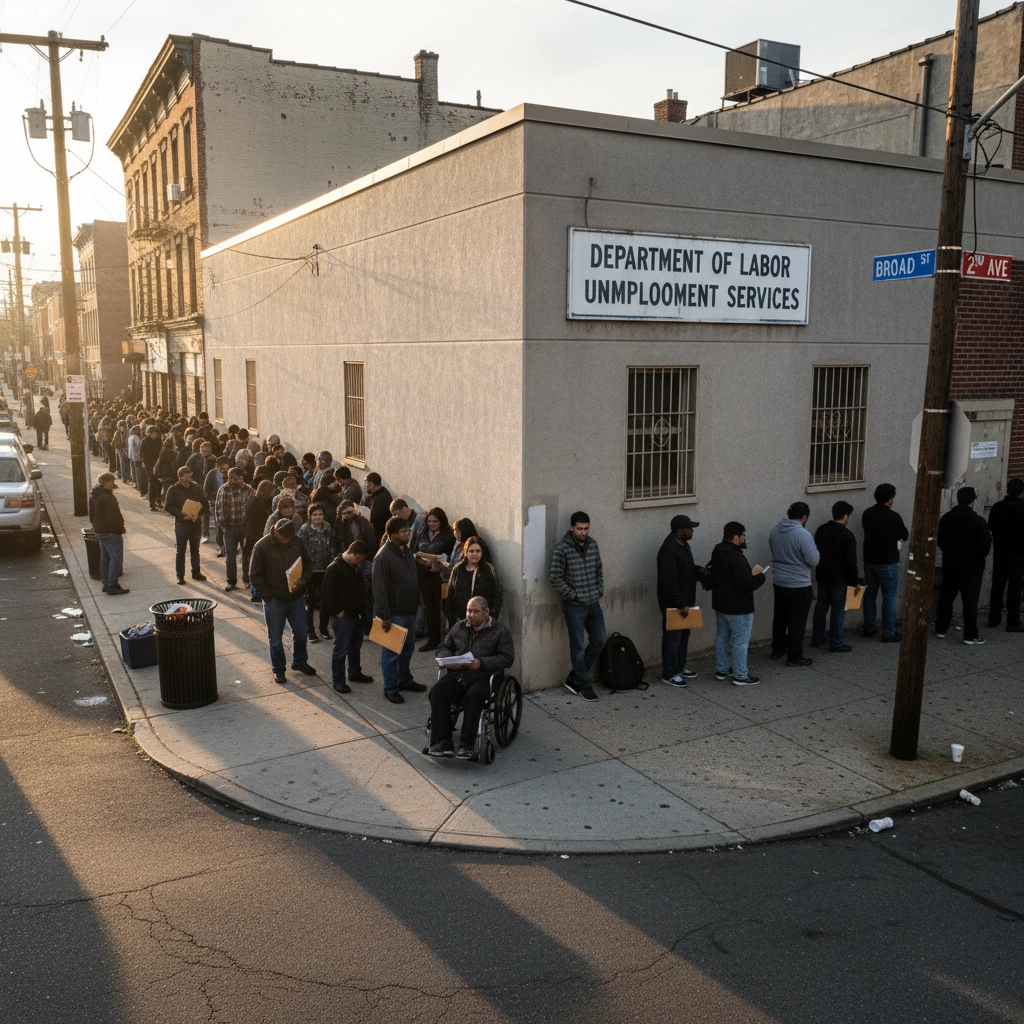Wake-Up Call to America: The Cost of Dependence
- Randyb Dinwiddie
- Nov 3
- 5 min read
America's got a problem that goes way deeper than empty bank accounts or rising prices. We've built a system that teaches people to wait for handouts instead of rolling up their sleeves. The numbers don't lie: and they're uglier than you think.
The Education System That Forgot Its Job
Here's the kicker: only 37% of high school graduates are actually ready for college-level work without remedial classes. That's according to the National Assessment of Educational Progress. Nearly two-thirds of kids walking across that graduation stage can't handle basic college coursework.
But it gets worse. The National Association of Manufacturers found that 67% of manufacturers report difficulty finding qualified workers. We're not talking rocket science here: basic manufacturing jobs that built the middle class for generations.

The problem starts early. Only 24% of high school seniors score proficient or above in financial literacy, according to the Council for Economic Education. These kids graduate without understanding budgets, credit, or how compound interest works. Then we act surprised when they make terrible financial decisions.
The Assistance Explosion
The numbers around government assistance are staggering. 42.2 million Americans receive SNAP benefits as of 2024: that's about 1 in 8 people. The program costs taxpayers $113 billion annually.
But here's what really matters: the average SNAP household receives benefits for 23 months. Nearly two full years. For a program supposedly designed as temporary assistance, that's a pretty long "temporary."
Even more telling: 16% of SNAP recipients have been on the program for over 5 years. That's not a safety net: that's a hammock.
The Supplemental Security Income program has 7.7 million recipients, with the fastest-growing category being "disabled" adults under 65. Since 1990, this category has grown by 300%. Either America got a lot more dangerous, or we got a lot more creative about qualifying for benefits.
Work? What Work?
Labor force participation tells the real story. Only 62.5% of working-age Americans are actually working or looking for work. That means more than 1 in 3 able-bodied adults have simply checked out of the workforce entirely.
Compare that to 1950, when 86% of men aged 25-54 were working. Today? That number has dropped to 76%. We're talking about prime working-age men who've just... stopped.

The disability rolls paint an even grimmer picture. 12.7 million Americans receive Social Security Disability benefits: double the number from 1995. The most common reason? "Mood disorders" and "musculoskeletal problems": conditions that previous generations somehow managed to work through.
The Graduation-to-Nowhere Pipeline
Our schools are churning out graduates who can't function in the real world. Only 34% of high school graduates meet college readiness benchmarks in all four core subjects, according to ACT scores.
But the real gut punch? 26% of college freshmen need remedial math courses. Another 17% need remedial reading. We're talking about kids who spent 13 years in school and still can't handle basic math or reading at a college level.
The workforce readiness numbers are even worse. The National Association of Secondary School Principals reports that only 29% of high school graduates have the skills needed for entry-level jobs that don't require college degrees.
The Debt Bomb
While we're teaching dependence, we're also teaching financial irresponsibility. Student loan debt hit $1.75 trillion in 2024, affecting 43.4 million borrowers. The average graduate leaves school $37,000 in debt: for an education that often doesn't prepare them for work.
Credit card debt tells the same story. Americans carry $1.13 trillion in credit card debt, with the average household owing $6,194. We've created a generation that thinks debt is normal, that buying things they can't afford is just part of life.

The Real Cost of Dependence
This isn't just about hurt feelings or work ethic: it's about cold, hard economics. Government transfer payments now make up 18% of all personal income in America. That's money taken from productive workers and handed to non-productive recipients.
The total cost of means-tested welfare programs? $1.03 trillion annually. That's more than we spend on national defense. We're literally spending more money on dependence than we are on protecting the country.
But here's the real kicker: For every dollar spent on welfare programs, only 33 cents actually reaches the intended recipients. The rest gets eaten up by bureaucracy, administration, and overhead. We've built a massive system that mainly exists to feed itself.
The Multiplier Effect
When people don't work, everyone pays. Each person on long-term unemployment costs taxpayers an average of $59,000 annually when you factor in lost tax revenue, increased benefit costs, and economic drag.
The Congressional Budget Office estimates that every 1% increase in labor force participation would boost GDP by $250 billion. We're literally leaving trillions on the table by accepting mass workforce dropout.
International Wake-Up Call
Other countries are eating our lunch. Singapore's education system produces students who score 40 points higher in math than American kids. Germany's apprenticeship programs have youth unemployment at 7.5% compared to America's 14.2%.
Even more embarrassing: South Korea has 94% workforce participation among prime-age adults. We're at 82%. Countries that rebuilt from rubble 70 years ago now have higher workforce participation than the richest nation in history.

The Fix Isn't Rocket Science
The solution is simple, but not easy. Schools need to teach work skills, not just test-taking skills. Every high school graduate should know how to balance a checkbook, understand compound interest, and have either college-ready academics or job-ready skills.
We need to bring back apprenticeship programs that connect education directly to employment. Right now, only 0.3% of American workers are in apprenticeship programs compared to 4% in Germany and 3% in the UK.
Most importantly, we need to stop rewarding non-work. Able-bodied adults without dependents should have work requirements for assistance. Period. No exceptions.
The Bottom Line
America didn't become great by teaching people to wait for help. We became great by teaching people to help themselves. Every month we delay fixing this problem costs the economy $20 billion in lost productivity.
The choice is simple: we can keep feeding a system that creates dependence, or we can start building one that creates independence. Because when too many people expect to be carried, the whole nation breaks under the weight.
Protect Your Business Investment
Running a business means taking responsibility for your success: and protecting it. At Dependable Brokers, we believe in the power of self-reliance, starting with smart business insurance that keeps you independent from financial disaster.
Don't wait for problems to find you. Take control of your business protection today.
Get Your Business Insurance Quote Now →
Ghost writer: Jake Morrison, Amerishop Services












































There needs to be many examples made of when people chronically abuse the system to keep their lives easy at someone else expense. Help up programs are just that. They were never built for a lifetime generational hand out